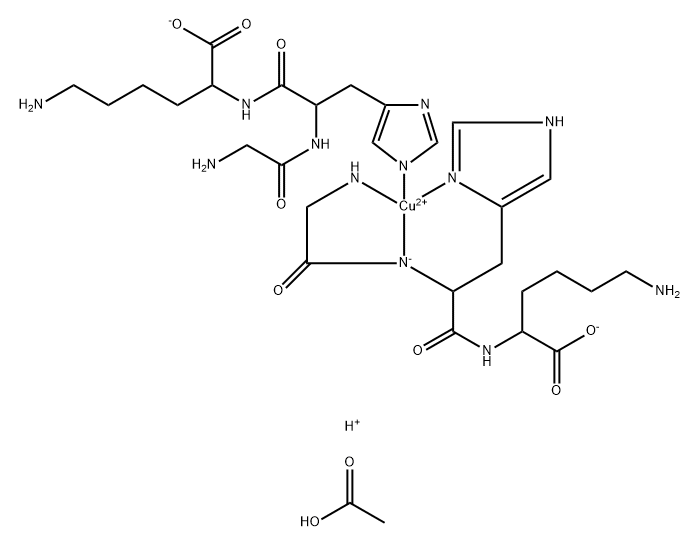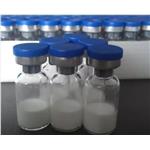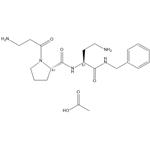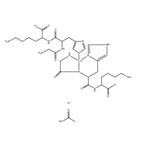Iamin gel was launched in the US for the care of chronic and acute wounds.
It can be prepared by combining the tripeptide GHK and copper (Ⅱ) acetate. There
are several species present in equilibrium but the biscomplex is the dominant
compound at neutral pH. The GHK sequence is found in only eight human proteins
and is an endogenous growth factor that stimulates collagen synthesis and
angiogenesis. This is part of the explanation for its wound healing and tissue repair
ability. It can significantly delay fibroblast activation, is a growth factor for
hepatocyctes, neurons, thyroid follicular cells and is a chemoattractant for
monocytes, macrophages, mast cells and capillary endothelial cells. Copper is also
known to have an effect on lysyl oxidase which is a key enzyme involved in collagen
formation.
Prezatide is used for skin care, and has the potential to treat chronic obstructive pulmonary disease and metastatic colon cancer. Prezatide copper acetate is used in personal skin care products with anti-inflammatory and anti-allergic effects, such as essence lotion, cream, facial mask and sunscreen, etc
Copper peptides, including Prezatide, are known for their potent biological activity, primarily due to copper's essential role in various enzymatic processes. In wound healing, Prezatide copper acetate promotes angiogenesis (the formation of new blood vessels), which is critical for supplying nutrients and oxygen to the wound site. This process is facilitated by activating growth factors such as vascular endothelial growth factor (VEGF) and transforming growth factor-beta (TGF-β). Additionally, Prezatide copper acetate exhibits significant anti-inflammatory properties. It inhibits the production of pro-inflammatory cytokines, thereby reducing inflammation and promoting a conducive environment for tissue repair. The compound also boosts the synthesis of extracellular matrix components like collagen and elastin, which are vital for maintaining skin integrity and elasticity, thus explaining its use in dermatological applications.
Commonly reported side effects from topical application include skin irritation, redness, and itching at the site. These are generally mild and tend to resolve with continued use or after product discontinuation. More severe allergic reactions are rare but can occur, manifesting as swelling, severe itching, or difficulty breathing, which would require immediate medical attention.
Systemic administration of Prezatide copper acetate may present a different side effect profile. Patients could experience symptoms such as nausea, vomiting, headache, dizziness, and, in some cases, gastrointestinal disturbances. Due to the involvement of copper, there is also a potential risk of copper toxicity, particularly in patients with underlying conditions that affect copper metabolism, such as Wilson’s disease. Therefore, it is crucial to monitor copper levels in the body during treatment.



